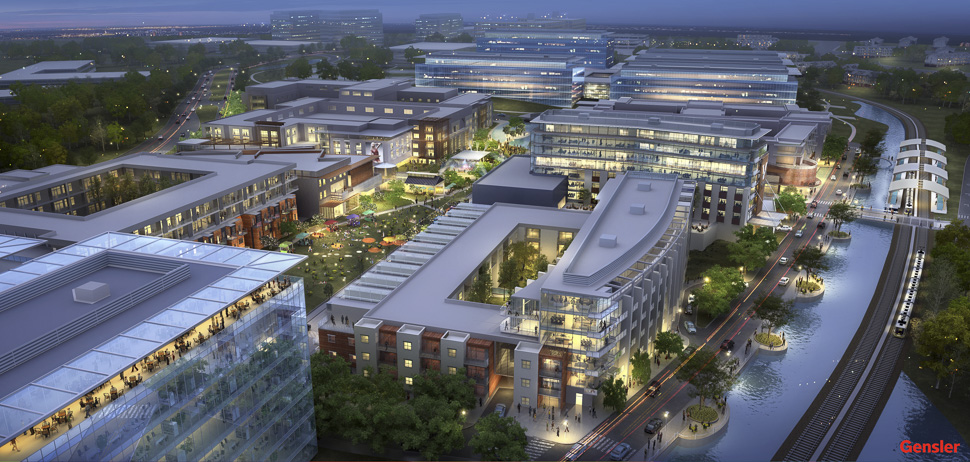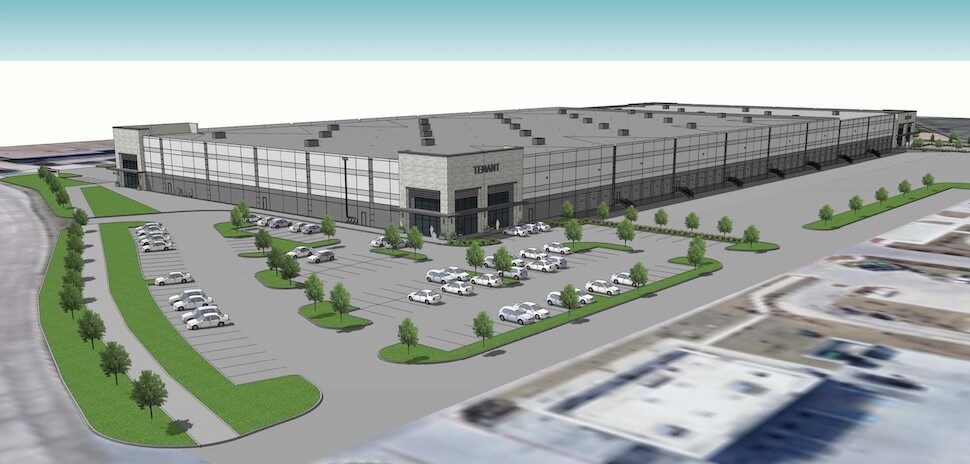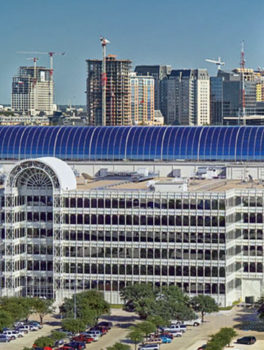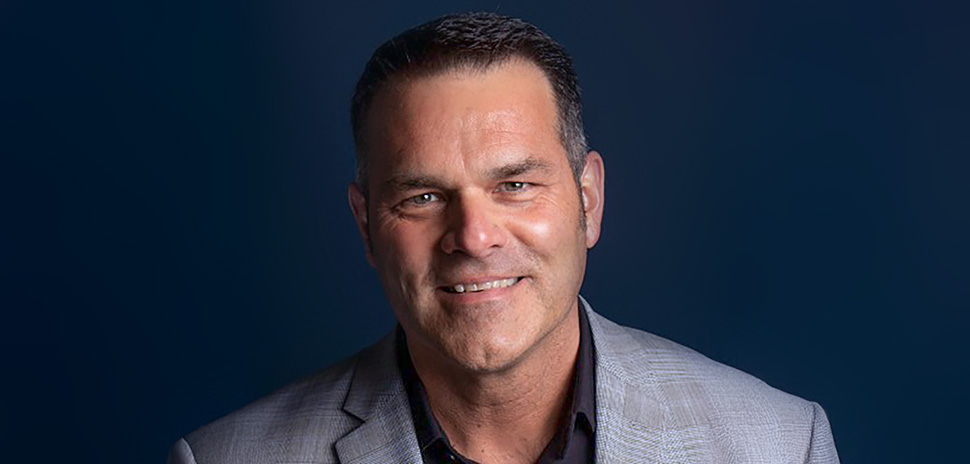On former ranch land that stood undeveloped for decades, Verizon is replacing sagebrush and grass with 5G technology, innovation labs, and high-rise buildings made of stone and shimmering glass.
It’s the Hidden Ridge development, Verizon’s $1 billion, 150-acre mixed-use project in partnership with real estate development and investment company KDC. The project is rooted in North Texas ranching, but is a rising symbol of the future as one of the region’s most important real estate projects.
“We’re going to light it up with 5G.”
James Tousignant
Realty Vice President, Verizon
Hidden Ridge is close to the heart of KDC Chief Executive Officer Steve VanAmburgh, who started his working life on the ranch run the Carpenter family. Now, he’s helping wrangle its future as an innovative tech- and transportation-driven real estate development.
The development will have its own DART station, and will corral innovative amenities such as the latest in communications technology, coworking spaces, incubators, and high-tech apartment homes within a mixed-use roundup of retail, residential, and roughly 3 million square feet of office space.

[Rendering: Gensler]
Verizon owns the land wedged between John Carpenter Freeway and MacArthur Boulevard, and had the vision, but it needed a big corporate tenant to kickstart the project.
“Since the creation of Verizon, that land has sat undeveloped with no real plans for its use,” Verizon Realty Vice President James Tousignant says.
About three years ago, Verizon decided it was time to expand in North Texas with a new office campus.
Verizon wanted to be part of the philosophical shift away from traditional suburban office campuses in favor of the modern mixed-use developments, Tousignant says. That was the genesis of Hidden Ridge.
“We wanted to bring the benefits of an urban lifestyle to the suburbs,” Tousignant says. “We thought it would be important to create an environment that’s attractive to employees—and prospective employees.”
KEY PLAYERS
Developers: Verizon & KDC
General Contractor: Austin Commercial
Project Architect: Gensler
Design Team: Duda | Paine Architects, HKS, Corgan Associates
Verizon partnered with DART to put in a new Orange Line train station and started developing plans for retail, residential, and an innovation campus where small businesses and startups could work alongside Verizon on the latest technology.
At the same time, VanAmburgh was helping energy company Pioneer Natural Resources find a site for a new headquarters. Irving-based Pioneer was interested in several sites in multiple cities.
Ultimately, KDC and Pioneer decided Hidden Ridge would be the ideal spot for the oil and gas driller to build a 10-story glass-and-stone tower with a seven-story parking garage.
KDC bought the land for the tower and will lease it to Pioneer, which will receive $6 million in incentives. In September, KDC hosted a topping out ceremony for the building and celebrated 1 million manhours of work on the project.
Austin Commercial is the general contractor on the development, and Gensler is the project architect. Duda|Paine Architects, HKS, and Corgan Associates are members of the design team.
Leveraging 5G technology
With Verizon in charge of the development, cutting-edge telecommunications technology will be a key component.
Through the innovation campus, Verizon plans to offer space where businesses can showcase the newest technologies and offer space for the public to come in and tinker with their own ideas.
“We’re putting the pieces together to create an incubator space for small developers and small business to work with Verizon to create technologies that will ride on the new 5G technology,” Tousignant says. “We’re going to ‘light it up’ with 5G. We’re going to have all the infrastructure in place ready for people to experiment on.”
Verizon will partner with the apartment home builders to roll out the latest smart home technologies. Retail shops will utilize the latest in smart advertising and pedestrian monitoring. The streets will be a testing ground for smart city technology, such as street lights.
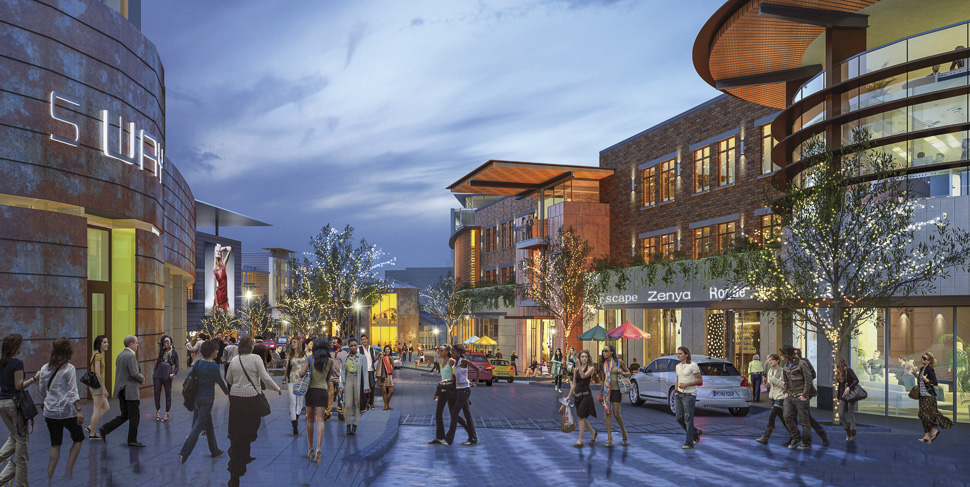
[Rendering: Gensler]
The 5G technology will extend to the 2-acre park, too, which he envisions being similar to Dallas’ Klyde Warren Park in its programming. It will feature entertainment venues, an education pavilion, water features, and the latest technology.
“The innovation hub is integrated into the retail and public space—it’s woven through the lifestyle core,” he says. “A lot of people think it’s unusual for Verizon to be involved in a real estate development. But to us, it’s core to the business with the opportunity to create this living laboratory for developing technologies.”
Verizon is also in talks with coworking giant WeWork to open a location near the innovation hub.
How Verizon came to own the land
Verizon’s predecessor, GTE, actually built the existing office at the southeast corner of John Carpenter Freeway and Hidden Ridge in 1990. At one point, GTE was going to relocate its Connecticut headquarters to Irving but that deal fizzled when the Bell Atlantic merger happened.
But GTE—and, later, Verizon—held on to the land.
The lynchpin for making this whole deal happen, though, was Pioneer.
Verizon sold KDC the land, and KDC contributed the financing to get the long-term lease with Pioneer. Verizon and KDC then created a partnership that will be the landlord for Pioneer’s headquarters.
The 1-million-square-foot building is scheduled to open in the first quarter of 2020.
“Verizon and Pioneer, to have those best-in-class brands be a part of establishing a development core for the future, is really exciting for Las Colinas,” says Beth Bowman, president and CEO of the Las Colinas Chamber of Commerce and Irving Economic Development Partnership. “It represents a new era in urban planning. This truly is a live-work-play transit-oriented development. Verizon had the vision to turn Mr. Carpenter’s former ranch land, which they owned, into the workplace of the future.”
Hopping on the train
The DART rail station is funded and scheduled to be ready when the Pioneer headquarters opens. The Carpenter Ranch station is planned near Meadow Creek Drive and Green Park Drive on the northern edge of Hidden Ridge. That station will be about 15 minutes, or three stops away, from Dallas Fort Worth International Airport’s DART station at Terminal A.
Access to a rail line means that Hidden Ridge will be a transit-oriented development, much like the Cypress Waters development around Lake Carolyn just a few miles away.
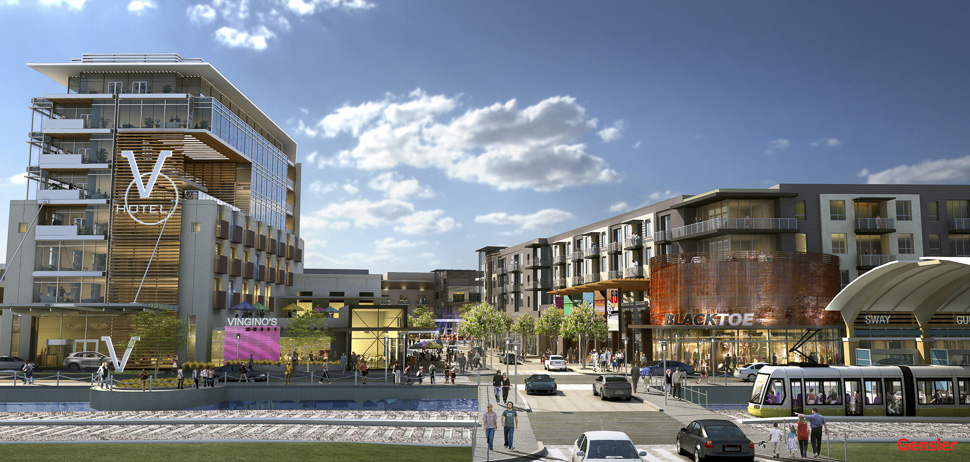
[Rendering: Gensler]
The mixture of apartments with ground-floor retail, offices, a hotel, and a park that’s reminiscent of Klyde Warren Park in Dallas will complement the train station and Pioneer headquarters, Tousignant says.
The first two apartment communities will have a total of 800 units. Hidden Ridge is zoned for a total of 1,200. Tousignant says these apartments will have hotel-like amenities.
The western end of the project closer to MacArthur Boulevard will have more traditional big box store retail, though the architectural style will carry over from the rest of Hidden Ridge.
That center will have a Verizon retail store, of course, and a Starbucks.
Construction is scheduled to start in 2019.
A 50-year history comes full circle
For VanAmburgh, overseeing this project is a great honor because of his close ties to Hidden Ridge’s history, present, and the future of Las Colinas, he says.
As a teenager, VanAmburgh spent summers working on the Carpenter Ranch, a sprawling, working ranch in North Irving. Today, that land, and the Carpenter family, are known for the Las Colinas development.
But in the 1960s, there was no Las Colinas—only the El Ranchito de Las Colinas—or “The Little Ranch of the Hills.”
Ben Carpenter, a World War II veteran and legendary developer, needed help at the ranch, so he asked his son, John Carpenter III, then a teenager, to enlist his school friends, including VanAmburgh, to work there.
“It was a commitment you had to make for the entire summer,” VanAmburgh says. “It was working outside building fences, hauling hay, cutting grass, painting fences. Just doing all sorts of ranch work. We worked on cows from time to time.”
The Carpenter family also gave him his first job after college at Southland Financial, where he started leasing and marketing properties in the burgeoning Las Colinas development.
“I thought it was so neat. If you think about it, from 14-years-old to 64, I’ve touched that site,” VanAmburgh says. “I’ve had some custodial responsibility for almost 50 years.”
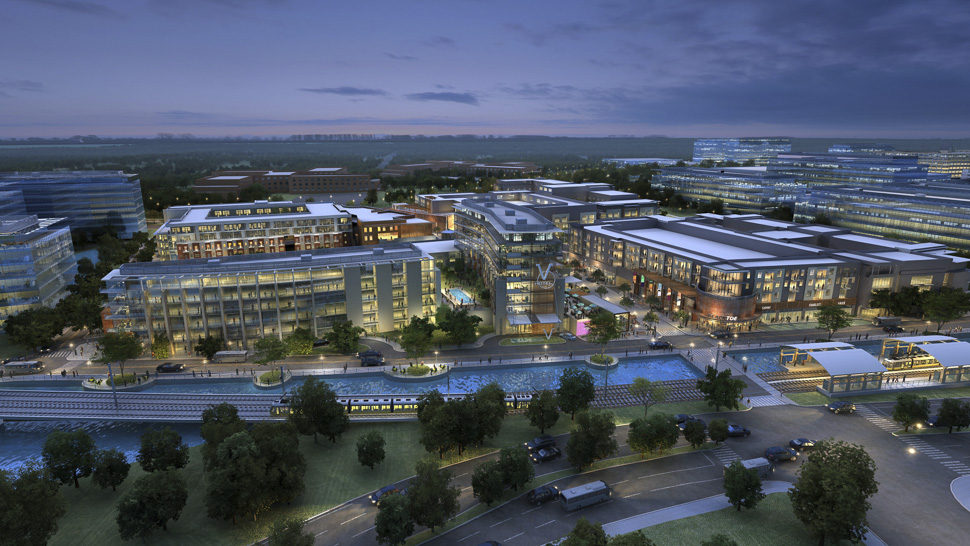
[Rendering: Gensler]
Quick Facts
- 150 acres make up Hidden Ridge
- 1.5 million square-feet of corporate office space
- 200 rooms in the hotel
- 1,200 residential units
- 80,000 square-feet of restaurant, retail and green space
- 27 acres make up Pioneer’s headquarters
Incentives
From the city:
- A 75 percent tax abatement on real property taxes for 10 years if the campus taxable value is $100 million or more.
- A 75 percent tax abatement on personal property taxes for 10 years if the business personal property value exceeds $15 million.
For Pioneer:
- A cash grant of $545,000 made in three payments over seven years of meeting certain obligations.
- A cash grant of $160,000 made in three payments at the rate of $500 per new job with an average salary of $90,000 up to 320 new jobs over a 10-year period.
![]()
Get on the list.
Dallas Innovates, every day.
Sign up to keep your eye on what’s new and next in Dallas-Fort Worth, every day.

